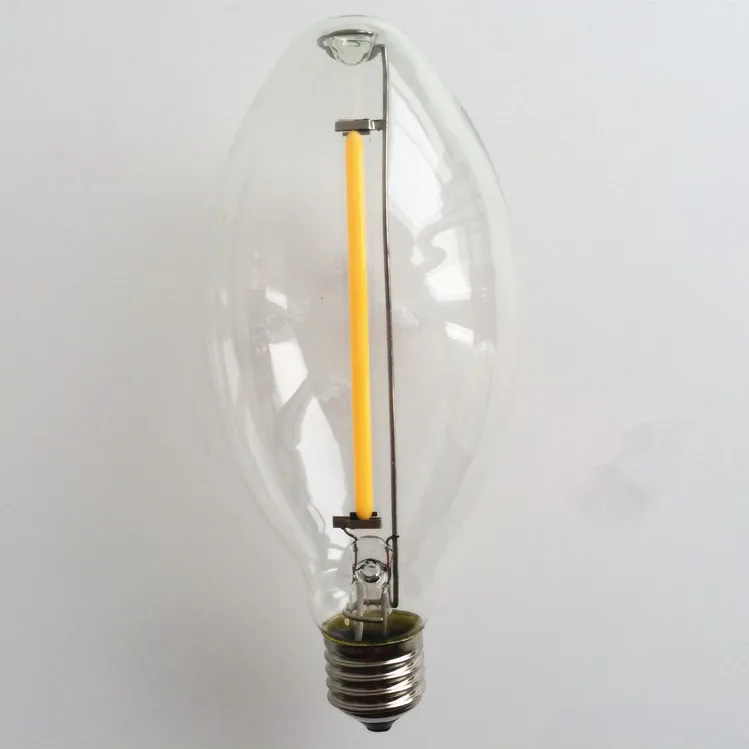mbrooke
Batteries Included
- Location
- United States
- Occupation
- Technician
Wow, just wow.
They aren't so bad if you add some phosphor to them.
Wow, just wow.
181102-1026 EDT
mbrooke:
Basics of what?
We have varying series current limiting resistance with time. Not shown. We have varying voltage across the bulb with time, neither averaged or instantaneous. Not shown. We have varying temperature in the bulb. Not shown, We have varying gas pressure in the bulb with time. Not shown. Etc.
.
How do the warm-up and hot-restrike times compare for the 120-volt vs. 240-volt bulbs?
181102-2019 EDT
SG-1:
The plots for the Hall probe show a small DC offset upward for the current measurement. The zero crossing shift might be removed if the current probe DC zero offset was removed.
It will be interesting to see the plots for the mercury vapor bulb using the hall probe. Also make a 10 turn coil thru the Hall probe which will make it a 20 A full scale probe.
.
Will mercury vapor lamps ever make a comeback? Thoughts? :?

181103-0704 EDT
SG-1:
Your curves are looking very good.
When searching the Internet I have found it very difficult to find information on I-V curves for mercury vapor lamps, or even arc discharge.
One site, page 48,
http://thesesups.ups-tlse.fr/2573/1/2014TOU30242.pdf ,
in figure 1.4 shows a general plot. In the region "Non Thermal" you see the negative resistance portion of the arc discharge.
There are many variables that influence the V-I curve of a bulb.
Some other somewhat interesting links were:
https://www.google.com/search?ei=Mn...1j0i10j0i22i30j33i22i29i30j33i299.q7ESF3p04BY
https://en.wikipedia.org/wiki/Neon_lamp
Negative resistance between points A and B in the plot. You can make a simple oscillator with a battery, resistor, capacitor, and an NE-51 neon bulb.
.
Here is my best attempt to follow the circuit through the lamp in photos. The symmetry expected with the upper aux electrode is not there. We do not know the values of the carbon resistors or if they are the same. The lamp would have to be deconstructed to find that answer.
Spectacular work- and much appreciated!
IMO a single prove MV would make it easier.
Maybe for Halloween, when you want people's skin to have a ghastly greenish appearance.Will mercury vapor lamps ever make a comeback? Thoughts? :?
Yes, a movie would have been nice. Nearly all my experience & equipment is with still photography. I was trying earlier this evening to record the wave form as it changes during start up. The voltage & current traces lay on top of each to begin with, in phase, then as the arc tube comes on line the wave form morphs into the pictures I posted. My little point & shoot camera can make videos, but it could not get a focus lock on the scope's screen. My SLR is too old to make a video. Have not given up yet...
Maybe for Halloween, when you want people's skin to have a ghastly greenish appearance.
That is why it does not matter that the upper carbon resistor is between the tungsten filaments, it is 10X or 100X greater in value than the filament.181105-0746 EDT
SG-1:
The resistors are likely in the 10,000 to 100,000 ohm range. Physical size and full voltage that exists across arc element of the bulb. This is near full supply voltage to the entire bulb at initial start up minus something like the voltage drop across a neon bulb, about 60 V. After the mercury arc gets to full current, warmed up, then most of the arc voltage drop appears across the resistor.
In a 175 W mercury bulb I bought this weekend there is only one starter electrode. I haven't played with it yet, need a socket.
Spark and arc discharges have interested me for a long time, but I have not done much study on them.
.

